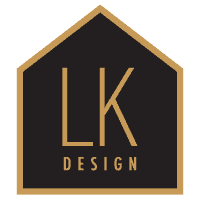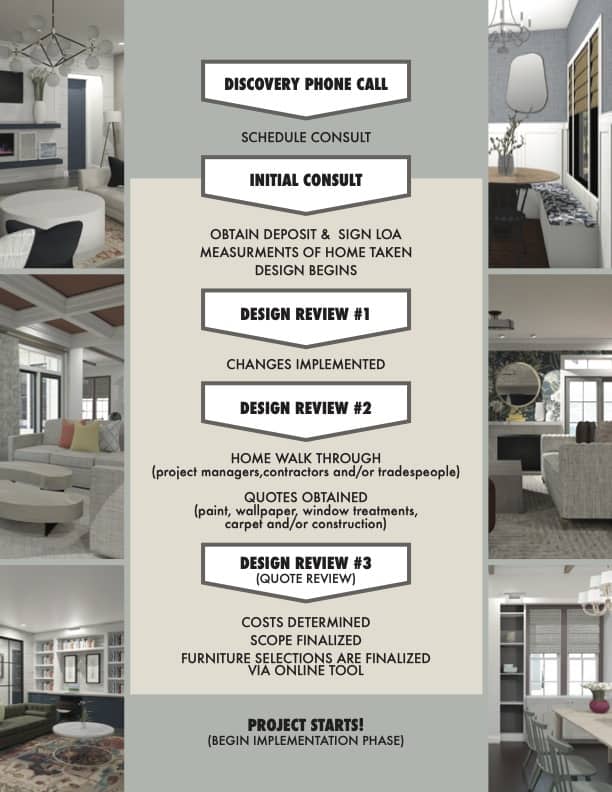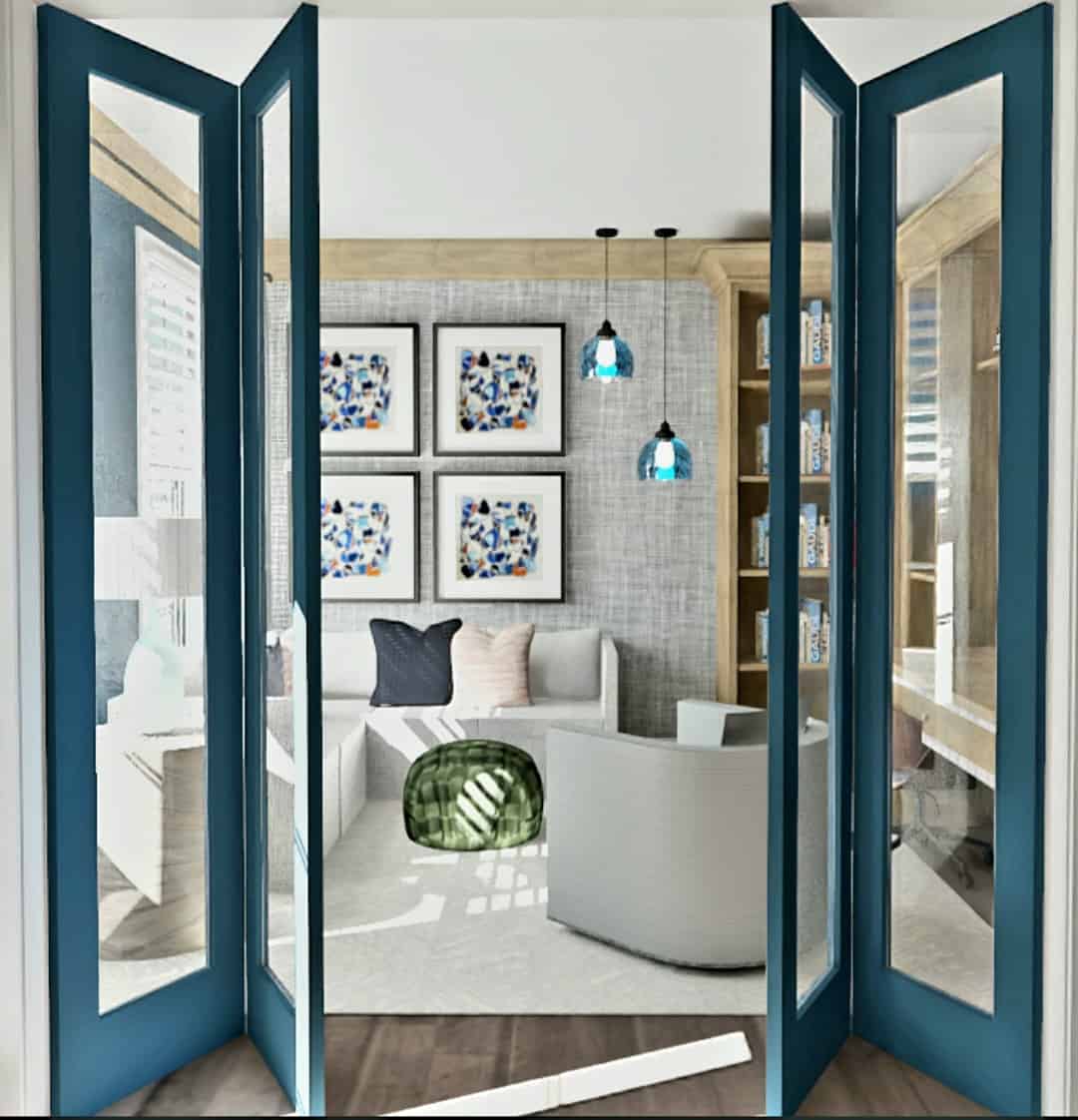Kitchen Design
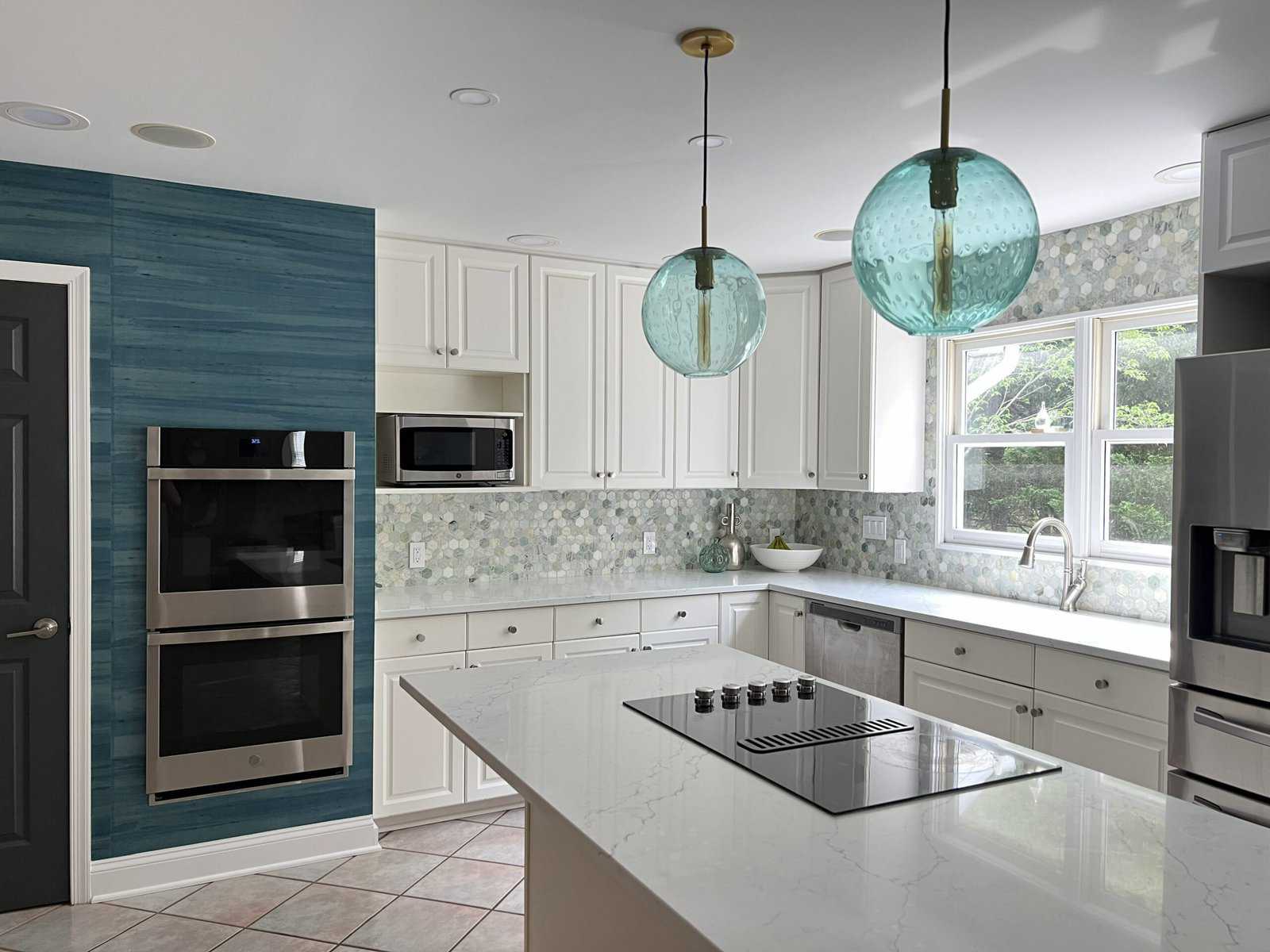
Explore Our Kitchen Design Services
The Role of an Interior Designer in Kitchen Design & Remodeling
In the realm of home improvement, the task of kitchen design and remodeling is a significant undertaking.
The interior designer’s role is pivotal, merging aesthetics with functionality and their value in transforming kitchens, from understanding client needs, and formulating design plans, to overseeing project completion is immeasurable.
A well-executed remodel not only augments the home’s appeal but also its market worth. Dive into the intricate, artistic process of kitchen remodeling, led by the expertise of an interior designer.
Transform Your Kitchen with the Touch of an Interior Designer
By collaborating with a professional interior designer, you can achieve a harmonious balance between functionality and visual appeal. So, why settle for a mediocre space when you can unleash its true beauty through the hands of a skilled designer?
Key Takeaways
- An interior designer plays a crucial role in optimizing the functional and aesthetic elements of a kitchen space during a remodeling project.
- They consider various factors such as layout, lighting, color scheme, appliances, and cabinets to create a harmonious and stylish kitchen design.
- Interior designers leverage their understanding of ergonomics to ensure a comfortable and efficient kitchen environment.
- They balance style and functionality, creating a practical and efficiently remodeled kitchen that meets the homeowner’s needs and preferences.
Understanding Kitchen Remodeling
Kitchen remodeling is a complex process involving multiple facets such as planning, selecting materials, and execution, is crucial to achieving a functional and aesthetically pleasing kitchen space.
A thorough grasp of this process empowers homeowners to make informed decisions, ensuring an outcome that meets their needs and preferences. The planning phase involves setting a functional layout, considering workflow, and establishing a budget.
Material selection requires understanding the pros and cons of different options, from countertops to cabinetry, aligning with the kitchen’s design theme and homeowner’s lifestyle. Execution, the final stage, involves the actual remodeling work, adhering to the predetermined plan and quality standards.
A well-executed kitchen remodeling project not only enhances the home’s aesthetic appeal but also significantly boosts its market value.
What is the Role of Interior Design in Kitchen Remodeling?
A significant aspect of kitchen remodeling is the role of an interior designer, a professional whose expertise lies in optimizing the functional and aesthetic elements of a space. They consider the kitchen’s layout, lighting, color scheme, appliances, and cabinets, ensuring each component complements the other, creating a harmonious synergy.
They leverage their understanding of ergonomics, ensuring a comfortable, efficient, and safe kitchen environment. Incorporating the latest design trends and accessibility standards, they transform kitchens into stylish, user-friendly spaces.
Their knowledge of materials helps to select durable, easy-to-maintain surfaces that enhance the kitchen’s longevity. At the heart of their role is creating a balance between style and functionality, ensuring the remodeled kitchen not only looks attractive but is also practical and efficient.
Evaluating Current Space and Functionality
The first step in the kitchen remodeling process involves the interior designer meticulously assessing the existing kitchen space and its functionality. This evaluation plays a crucial role in the enhancement of the kitchen’s aesthetics and operational effectiveness.
In this phase, the designer’s focus is on:
- Identifying the kitchen’s current layout and its efficiency.
- Recognizing the spatial relationship between various kitchen elements such as the work triangle (sink, refrigerator, and stove) and its effectiveness in promoting smooth workflow.
- Assessing the storage options and their adequacy for the homeowners’ needs.
These evaluations are fundamental in determining the scope of the remodeling project. They provide the interior designer with a clear vision of the transformations needed to create a kitchen that is both beautiful and functional, reflecting the homeowner’s lifestyle and needs.
Creating a Remodeling Plan
After thorough evaluation, it falls upon the interior designer to draft a comprehensive remodeling plan that integrates the homeowner’s preferences with functional design elements. The designer becomes a linchpin, marrying aesthetics with utilitarian requirements to create a harmonious kitchen space.
Here is an illustrative table that outlines the key steps and components of a remodeling plan:
| Stage | Task | Key Considerations |
|---|---|---|
| 1 | Space Planning | Ergonomics, Traffic Flow |
| 2 | Material Selection | Durability, Maintenance |
| 3 | Color Scheme | Lighting, Mood |
| 4 | Lighting Design | Task Areas, Ambience |
| 5 | Installation | Timeline, Quality Control |
This methodology ensures a kitchen remodel that is not only visually pleasing but also caters to the practical demands of daily usage. Ultimately, the interior designer’s role in a kitchen remodel is to facilitate a transformation that enhances the homeowner’s quality of life.
Selecting the Right Materials
In the process of selecting the right materials for a kitchen remodel, the interior designer’s expertise proves invaluable, offering guidance on durability, maintenance, aesthetics, and cost considerations. They assess the homeowner’s lifestyle, the kitchen’s usage, and propose materials that harmonize with the overall design scheme while meeting functionality needs.
Durability: The designer will recommend materials that can withstand the rigors of daily use, considering factors like resistance to heat, scratches, and stains.
Maintenance: Ease of cleaning and need for periodic treatments are assessed to ensure the materials suit the owner’s lifestyle.
Aesthetics and Cost: The designer balances beauty with budget, ensuring the selected materials offer pleasing visual appeal without breaking the bank.
Selecting the right materials navigates a complex interplay of factors, a task made smoother by an interior designer’s professional guidance.
Navigating Building Codes Maryland
A competent interior designer also expertly navigates through the complex web of local building codes in Maryland, ensuring the kitchen remodeling project adheres to all regulatory standards.
This involves a deep understanding of the city’s zoning regulations, safety requirements, and accessibility standards to guarantee project compliance. The designer must carefully interpret these codes, often layered with legal jargon, and apply them in a practical, aesthetically pleasing manner.
This process is crucial to avoid potential violations, fines, or even project shutdowns. Therefore, the role isn’t merely a tastemaker but also a guardian of safety and compliance.
Thus, the interior designer’s expertise in navigating the labyrinth of building codes is invaluable, safeguarding the homeowner from potential legal pitfalls.
Incorporating Sustainable Design Principles
Sustainable design principles, an integral part of modern kitchen remodeling, are expertly incorporated by interior designers to create functional, environmentally-friendly spaces. They balance aesthetics and ecological consciousness to create designs that not only look good but also reduce negative environmental impacts.
In the application of these sustainable design principles, the following key strategies emerge:
Use of Energy-efficient appliances: To minimize energy consumption, appliances with Energy Star ratings are selected.
Material Conservation: By repurposing existing materials or choosing materials with a low environmental footprint, waste is significantly reduced.
Indoor Air Quality Enhancement: The selection of low-emission materials and finishes improves indoor air quality, contributing to the overall health of the occupants.
These principles guide interior designers in delivering sustainable and stylish kitchen remodels.
Balancing Aesthetics and Functionality
An interior designer’s key role in kitchen remodeling involves achieving a harmonious balance between aesthetic appeal and functional efficiency. This involves the skilled integration of the kitchen’s design elements to create a space that is both visually pleasing and highly practical.
| Aspect | Aesthetic Considerations | Functional Considerations |
|---|---|---|
| Layout & Space | Flow and openness | Ergonomics and traffic flow |
| Material Choices | Texture and color harmony | Durability and maintenance |
| Lighting | Mood and ambiance | Safety and task effectiveness |
| Storage | Neatness and organization | Accessibility and capacity |
A designer’s expertise allows them to adeptly navigate these considerations, ensuring that the finished space is a reflection of the homeowner’s style and needs. Thus, the interior designer’s role is pivotal in bridging the gap between aesthetics and functionality in kitchen remodeling.
Overseeing Construction and Installation
Our role in kitchen remodeling also extends to overseeing construction and installation, ensuring that the final result aligns with the envisioned design. This oversight entails a keen eye for detail, meticulous planning, and expert knowledge of industry standards and local regulations.
Key responsibilities include:
- Coordinating with contractors, suppliers, and other professionals to ensure adherence to the design blueprint.
- Monitoring the quality of materials used and the installation process, cross-checking with the design specifications.
- Troubleshooting unforeseen issues that may arise during the construction phase, making necessary adjustments while still maintaining the integrity of the original design.
This comprehensive approach not only guarantees the aesthetic appeal and functionality of your kitchen but ensures a seamless, hassle-free remodeling process.
Managing Project Budget and Timeline
We also takes on the vital role of managing the project’s budget and timeline. We ensure that the design vision is achieved without exceeding the client’s budgetary constraints and complete the project within the stipulated timeframe.
They meticulously plan and control costs, monitor progress, and manage potential risks. To illustrate, consider the table below summarizing key tasks in budget and timeline management:
| Task | Objective | Outcome |
|---|---|---|
| Budget Planning | Define financial boundaries | Cost-effective design |
| Cost Control | Monitor and adjust expenses | No budget overrun |
| Timeline Setting | Establish project duration | Timely completion |
| Progress Monitoring | Track the project’s advancement | On-time delivery |
| Risk Management | Identify and mitigate potential issues | Smooth execution |
This budget and timeline management is crucial for a successful kitchen remodeling project.
Addressing Post-Remodeling Concerns
After ensuring a smooth execution, we then turn their attention to addressing any post-remodeling concerns raised by the client. Their role extends to post-project completion, guaranteeing that the client’s satisfaction is met with the new kitchen design.
Some common post-remodeling concerns they might address include:
Assessing the quality of finishing touches: Ensuring the cabinetry, countertops, and paint jobs are top-notch.
Evaluating appliance installation: Making sure all appliances are functioning efficiently and correctly installed.
Resolving layout issues: Confirming that the new design facilitates good traffic flow and maximizes space.
With their artistic eye and professional expertise, the interior designer ensures every detail aligns with the client’s vision, providing a kitchen space that is not only aesthetically pleasing but also functional.
Why Hire a Professional Interior Designer for Your Kitchen Remodel?
The answer lies in the designer’s in-depth understanding of aesthetics, functionality, and the latest industry trends. A professional interior designer brings to the table a unique blend of creative vision and practical skills, ensuring that the new kitchen not only looks attractive but also serves its purpose efficiently.
They can skillfully balance the elements of color, texture, and light to create a harmonious flow that reflects the homeowner’s personality and lifestyle. Furthermore, they are well-versed in space utilization, ergonomics, and safety guidelines, thereby adding immense value to the entire remodeling process.
Their expertise ensures an end result that is both stylish and functional, making the investment worthwhile.
Frequently Asked Questions
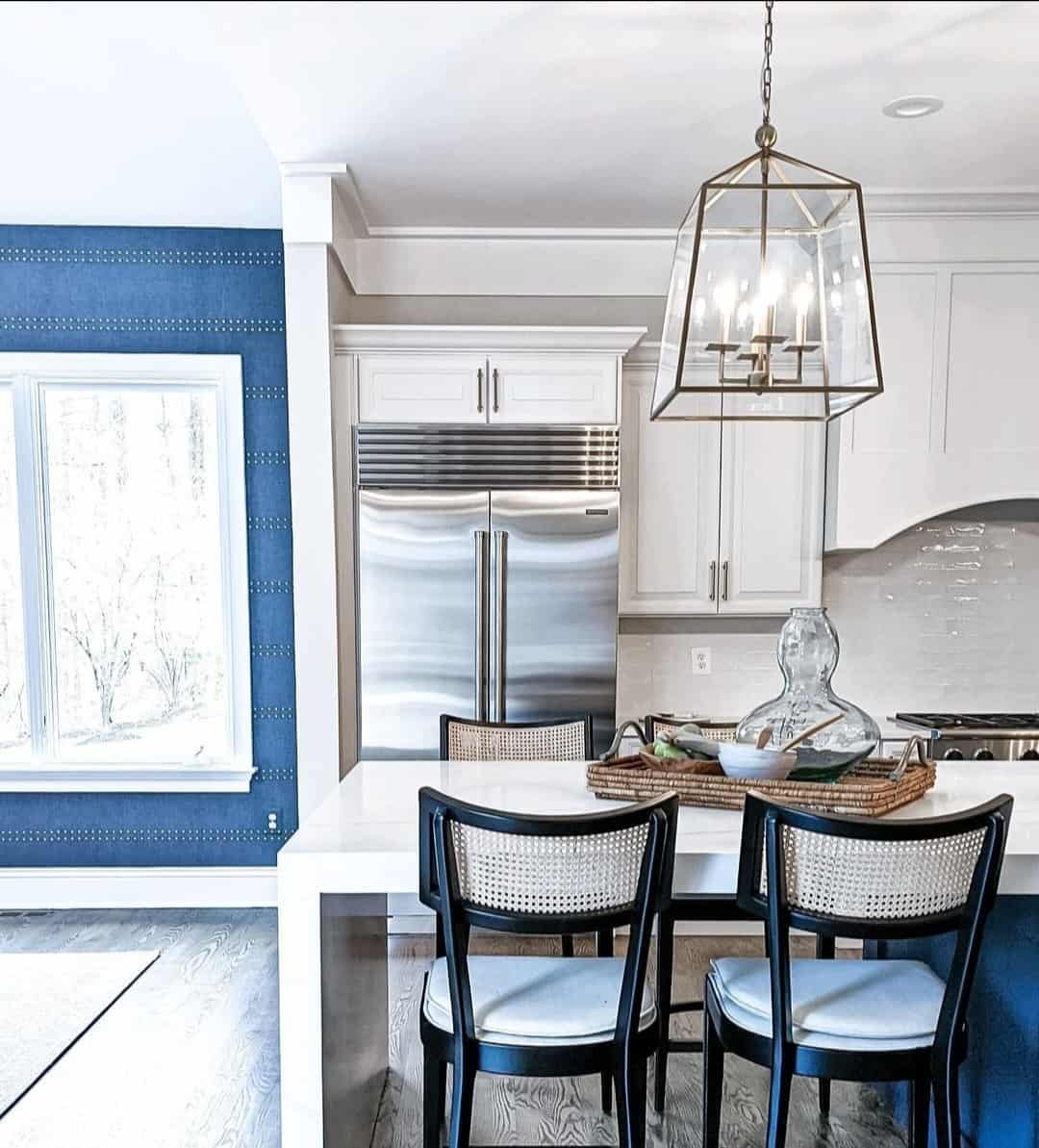
Common kitchen remodeling mistakes include improper space planning, under-budgeting, and overlooking aesthetics. An interior designer can prevent these issues, ensuring a balance of functionality, budget adherence, and visual appeal in the remodeled kitchen.
An interior designer harmonizes the kitchen remodel with the home's overall style by meticulously analyzing architectural elements, color palettes, and furniture styles, ensuring a seamless aesthetic transition between the kitchen and other living spaces.
An interior designer can infuse unique features such as eco-friendly materials, space-efficient layouts, smart storage solutions, and personalized aesthetics to ensure a kitchen remodel aligns perfectly with the homeowner's style and needs.
An interior designer guides the selection of energy-efficient appliances and sustainable materials, considering aesthetics, functionality, and environmental impact, to achieve an eco-friendly, cost-effective kitchen remodel.
Hiring a professional interior designer for kitchen remodeling offers numerous benefits such as improved functionality, enhanced aesthetics, increased home value, and efficient budget management, supported by industry statistics.
